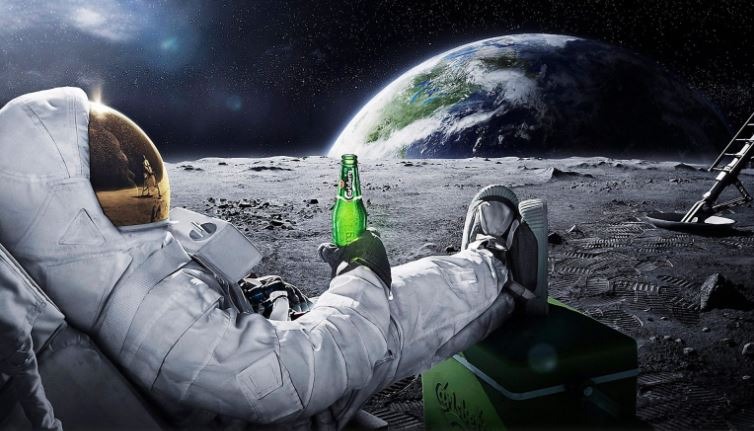Do You Know What the Future of Space Travel Looks Like
#SpaceTravel, #FutureOfSpace, #MarsMission, #SpaceX, #Artemis, #MoonLanding, #InterstellarTravel, #SpaceTourism, #JamesWebb, #ArtificialIntelligence, #RocketScience, #SpaceHabitat, #AsteroidMining, #HypersonicFlight, #ISRO, #NASA, #SpaceColonies, #DeepSpace, #Technology, #Exploration
KNOWLEDGE & EDUCATION
7/26/20253 min read


The dream of reaching beyond Earth has long fascinated humanity. From the first satellite launch to the historic Moon landing, space travel has evolved at an extraordinary pace. But what does the future of space travel hold for us? Are we headed toward Mars, mining asteroids, or living in space colonies? This article explores how technology, innovation, and global collaboration are shaping our cosmic journey into the unknown.
1. The Rise of Private Space Companies
In recent decades, private aerospace companies like SpaceX, Blue Origin, and Virgin Galactic have taken space travel from government exclusivity to commercial possibility.
Key milestones:
SpaceX's reusable rockets (Falcon 9) drastically reduced launch costs.
Crewed missions to the International Space Station using commercial spacecraft.
Space tourism with suborbital flights by Virgin Galactic and Blue Origin.
These breakthroughs mark the beginning of a space economy open to the public.
2. Missions to the Moon and Mars
a) Moon 2.0: Artemis Program
NASA’s Artemis mission aims to return humans to the Moon by the mid-2020s. Its goals include:
Establishing a sustainable lunar base.
Testing technologies for deeper space missions.
Promoting international cooperation with agencies like ESA and ISRO.
b) Mars: Humanity’s Next Giant Leap
Elon Musk’s SpaceX Starship is built for Mars colonization. Plans for the 2030s include:
Crewed missions to Mars.
Building self-sustaining habitats.
Creating a multi-planetary civilization.
Challenges like radiation, food production, and psychological health are being actively researched.
3. The Role of Artificial Intelligence in Space Travel
AI is revolutionizing space missions through:
Autonomous navigation for spacecraft.
Predictive maintenance of onboard systems.
Astronaut health monitoring.
Enhanced robotic exploration on Mars and other celestial bodies.
NASA’s Perseverance Rover uses AI for route selection, while upcoming missions will rely on intelligent robotic assistants.
4. Space Tourism: Not Just for Astronauts Anymore
The idea of civilians visiting space is becoming reality:
Blue Origin and Virgin Galactic offer suborbital joyrides.
SpaceX’s Polaris and Axiom missions plan private stays on the ISS.
Future plans include space hotels, like those proposed by Orbital Assembly Corporation.
Space tourism might be expensive today, but like air travel, it’s expected to become more affordable in the future.
5. Space Habitats and Colonies
In the long-term, humans may live and work in space. Projects being considered:
Lunar Gateway: A space station orbiting the Moon.
Mars habitats with 3D-printed structures and hydroponic farming.
Orbital colonies like O’Neill cylinders—rotating habitats with artificial gravity.
These concepts could support long-term human life beyond Earth.
6. Space Mining and Resources
Earth’s resources are limited, but space is rich in:
Rare metals from asteroids (like platinum and gold).
Water ice on the Moon and Mars, which can be converted into oxygen and rocket fuel.
Companies like Planetary Resources and Deep Space Industries are developing tech for space mining, potentially opening a trillion-dollar industry.
7. Hypersonic and Interplanetary Travel
Future spacecraft will be faster and more efficient:
Ion propulsion and solar sails for deep space.
Nuclear thermal propulsion (NASA and DARPA are actively testing this).
Hypersonic suborbital transport may reduce Earth-to-Earth travel time drastically.
Imagine traveling from Delhi to New York in under an hour—that’s the potential of orbital-class commercial transport.
8. The Search for Life and Interstellar Travel
Beyond our solar system lies the next frontier:
James Webb Space Telescope (JWST) is searching for biosignatures on distant exoplanets.
Breakthrough Starshot aims to send mini-probes to Alpha Centauri at 20% the speed of light.
Concepts like wormholes and warp drives remain theoretical, but scientists are exploring them.
The dream of interstellar travel remains far off—but not impossible.
9. Challenges Ahead
Despite the excitement, many hurdles remain:
Space debris: Thousands of satellites risk collision.
Radiation exposure: Cosmic rays pose serious health threats.
Ethical issues: Who governs space? Who owns celestial bodies?
Mental health: Long isolation affects astronaut psychology.
Solving these will require global cooperation, innovation, and regulation.
Conclusion
The future of space travel is not just science fiction—it’s unfolding right now. With private companies pushing boundaries, AI enhancing missions, and international space agencies planning colonies, we are entering an unprecedented era of exploration. Whether it's tourists orbiting Earth, astronauts stepping on Mars, or future generations born in space, our journey beyond the stars has only just begun. The final frontier is becoming the next great destination for humanity.
Knowledge
Empowering minds with reliable educational content daily.
Newsletter Signup
© 2025 DoYouKnow. All rights reserved.
Stay Ahead of the Trends – Join Our Newsletter
